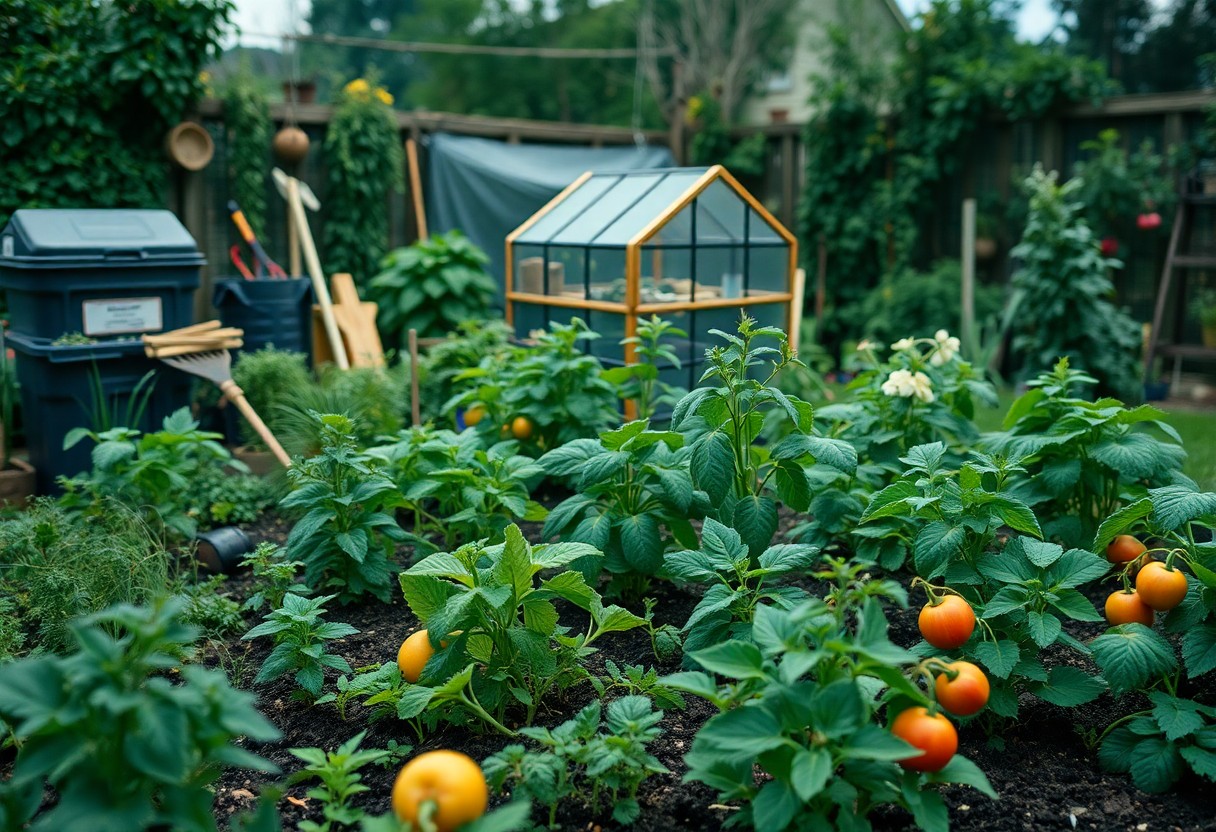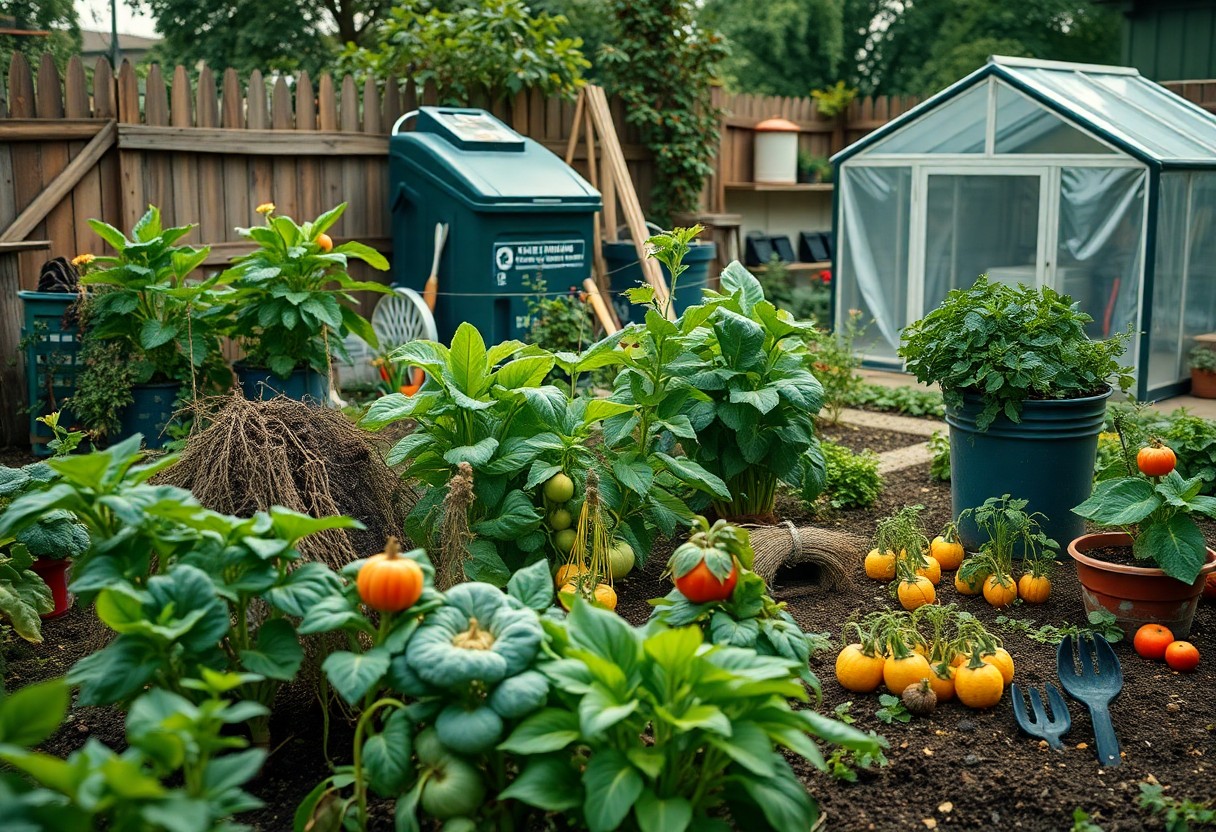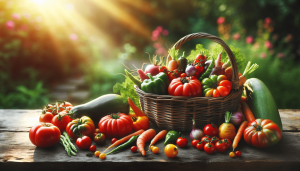Sustainable living starts in your backyard, where you can cultivate your own survival garden to ensure fresh produce year-round. By growing a variety of nutritious crops, you not only reduce your reliance on commercial food sources but also enhance your food security. This guide will equip you with the vital steps to create a thriving garden filled with resilient plants that can withstand various environmental challenges. Embrace the rewarding journey of gardening as you nourish both your body and the planet.
Key Takeaways:
- Choosing the Right Plants: Select a variety of crops that are well-suited to your climate and soil, focusing on nutrient-dense vegetables and fruits that provide the most energy.
- Soil Preparation: Invest time in enriching your soil with organic materials such as compost to promote healthy growth and improve yield.
- Water Management: Develop an effective irrigation strategy, using techniques like rainwater harvesting or drip irrigation, to ensure your garden remains sustainable during dry periods.
Understanding Sustainable Food Sources
Before you commence on your journey to grow your own survival garden, it’s important to grasp the concept of sustainable food sources. These sources are designed to meet your dietary needs without compromising the health of the environment or depleting natural resources. By incorporating sustainable practices into your gardening, you not only provide for yourself but also contribute to a healthier planet.
What Are Sustainable Food Sources?
An effective sustainable food source refers to any food that is produced, processed, and consumed in a manner that minimizes environmental impact. This includes foods grown through organic methods, permaculture, and regenerative agriculture. Essentially, sustainable food sources aim to enhance ecosystems while providing nutritious options for you and your community.
Importance of Sustainability in Food Production
Food sustainability plays a significant role in ensuring that future generations can also access the nutrients they need. By adopting sustainable practices, you help reduce environmental degradation and over-reliance on fossil fuels. Additionally, sustainable food systems tend to prioritize biodiversity and soil health, which are vital for resilient agricultural production. This way, you can contribute to a robust food security framework that benefits both yourself and the environment.
Importance of sustainability in food production cannot be understated. Emphasizing sustainable methods can significantly reduce your carbon footprint and conserve water resources. Moreover, by supporting local ecosystems, you foster healthy soil that leads to enhanced crop yields. This shift not only affects your immediate community but also plays a part in mitigating global climate change impacts. Your choices in gardening and food sourcing make a difference, ensuring that you do your part in creating a sustainable future.
How-To: Planning Your Survival Garden
Clearly, effective planning is necessary for creating a successful survival garden. It involves understanding your unique needs and ensuring that your garden will be sustainable and productive. By assessing your space, resources, and the plants that best suit your environment, you’ll create a thriving ecosystem that can support you in times of need.
Assessing Your Space and Resources
Garden space can vary significantly, so it’s important to evaluate what you have available. This includes considering the amount of sunlight your area receives, the soil quality, and your access to water. Depending on your resources, you may want to prioritize growing plants that yield high nutritional value while requiring minimal effort.
Choosing the Right Location
To maximize your garden’s potential, selecting the appropriate location is key. Factors like sunlight, drainage, and wind exposure will impact your plants’ health and productivity. Aim for a spot that gets at least six hours of direct sunlight daily while avoiding areas prone to flooding or strong winds, which can damage delicate seedlings.
Assessing your chosen location should focus on identifying the most favorable conditions for plant growth. Check for ample sunlight and ensure there is good drainage to prevent soggy roots. Additionally, consider the proximity to water sources for easy irrigation. Protecting your garden from potential pests and harsh weather can also inform your decision on location, making it a vital step in your planning process.
Tips for Selecting the Right Crops
To create a successful survival garden, consider selecting crops that are not only nutritious but also resilient. Your choices should aim at maximizing yield while minimizing effort. Keep these factors in mind:
- Choose fast-growing varieties
- Focus on caloric density
- Consider seasonal compatibility
- Opt for plants that offer multiple uses
Any combination of these strategies will improve your chances of having a productive garden.
Best Vegetables for Survival Gardening
Assuming you want the most effective crops for long-term survival, focus on vegetables that are nutrient-rich and can be stored or preserved. Some top choices include potatoes, carrots, and beans. These vegetables are versatile, easy to grow, and provide important calories and nutrients.
Incorporating Herbs and Medicinal Plants
Any well-planned survival garden should not overlook the importance of herbs and medicinal plants. These plants add flavor to meals, improve nutrition, and can be used for basic health remedies.
Another important aspect of your garden is the incorporation of herbs and medicinal plants. These offerings can include basil, garlic, and echinacea, which provide both culinary benefits and healing properties. Herbs like peppermint can help soothe digestive issues, while ginger is effective against nausea. Understanding the medicinal benefits of these plants not only adds depth to your survival garden but also enhances your overall well-being. In a survival situation, having access to natural remedies can significantly improve your health and resilience.
Factors to Consider When Growing Your Garden
Now, as you launch on the journey of cultivating your own survival garden, you must weigh several factors to ensure success. Consider the following:
- Climate and seasonality
- Soil health and enrichment
- Water availability
- Pest management
- Plant selection
This holistic perspective will aid in creating a thriving garden ecosystem.
Climate and Seasonality
Any survival garden you plan to grow must account for your local climate and the seasonality of various crops. Understanding the optimal planting and harvesting times will greatly enhance your yields and ensure that your plants flourish in alignment with weather conditions.
Soil Health and Enrichment
Consider that the health of your soil directly influences the vitality of your survival garden. Assess factors like pH levels, organic matter, and microbial activity to ensure a well-balanced ecosystem. Incorporating compost and organic fertilizers can improve nutrient availability and promote robust plant growth.
Garden health relies heavily on soil enrichment, which means you should constantly test your soil to learn about its nutrient composition. Adding organic materials such as compost, aged manure, or green manures can enhance the nutrient profile, fostering greater plant vitality. Additionally, address any compaction issues, as compact soil can severely limit root development and water infiltration, adversely affecting your garden’s productivity. Focusing on soil health will create an environment where both plants and soil life thrive, ultimately resulting in a more abundant harvest. Always prioritize your soil; it is the foundation of your survival garden.
How-To: Building Your Garden
For a successful survival garden, you need to focus on various key elements such as location, size, and plant selection. Start by identifying a sunny spot in your yard with good drainage, then outline the dimensions and shape of your garden. A raised bed may offer effective management and ease of access, especially if your soil is poor. Finally, prepare the soil and strategize your planting schedule to maximize yield throughout the growing season.
Garden Layout and Design
HowTo determine the best layout for your garden involves consideration of space and plant compatibility. Plan your garden in rows or squares, ensuring ample space between plants for air circulation and growth. Furthermore, take advantage of vertical gardening techniques to maximize the area you have available, allowing climbing plants like beans or peas to thrive while minimizing ground space.
Selecting the Right Tools
Your toolkit is imperative for establishing and maintaining your garden. Beginners should include basic items like a trowel, hoe, and pruning shears, while more experienced gardeners may require specialized tools tailored to their needs. Selecting quality tools will not only enhance your gardening experience but also support your long-term gardening goals.
A strategy to select the right tools involves consideration of the garden style and the tasks you plan to perform. Investing in durable, ergonomic hand tools can significantly reduce the risk of injury and improve your effectiveness in the garden. Additionally, prioritize tools that offer versatile functionalities, such as a multi-purpose garden fork. This approach enhances your gardening experience and encourages sustainable practices as you cultivate your survival garden.
Tips for Maintenance and Optimization
Keep your sustainable garden thriving with regular attention and care. Implement these maintenance techniques:
- Mulching to retain moisture and suppress weeds.
- Crop Rotation to enhance soil health and reduce pests.
- Composting to enrich your soil naturally.
- Regular Harvesting to encourage new growth.
Thou shall invest in diligent upkeep for a flourishing survival garden.
Watering and Irrigation Strategies
Strategies for watering include using a drip irrigation system to provide direct moisture to your plants’ roots while minimizing evaporation. Water early in the morning or late in the evening to avoid heat loss and ensure your plants thrive without drowning them. Pay attention to the specific needs of each plant species for optimal water intake.
Pest Control and Natural Remedies
Strategies for managing pests involve integrating natural solutions and fostering a balanced ecosystem. You can use companion planting to deter pests while promoting beneficial insects like ladybugs that feast on harmful bugs. Employ vital oils or homemade sprays with ingredients like garlic or neem oil for organic pest management.
Remedies for pest control include introducing beneficial insects into your garden, such as ladybugs and lacewings, which can naturally reduce pest populations. Additionally, creating traps with soapy water or using barriers like row covers can effectively deter unwanted visitors without the need for harmful pesticides. Always prioritize practices that enhance your garden’s health while ensuring you use natural remedies to promote a safe and sustainable growing environment.
Conclusion
With this in mind, growing your own survival garden empowers you to secure sustainable food sources. By understanding the principles of gardening, selecting the right crops, and employing efficient techniques, you can cultivate an abundant supply of fresh produce right in your backyard. Your efforts not only contribute to personal food security but also foster a deeper connection with nature and a healthier lifestyle. Start planning your garden today and take a proactive step towards self-sufficiency.
FAQ
Q: What are sustainable food sources, and why are they important in a survival garden?
A: Sustainable food sources refer to methods of food production that are environmentally friendly and can be maintained over the long term without depleting resources. In a survival garden, these sources are vital as they help to ensure consistent access to nutritious food, promote biodiversity, and reduce dependence on commercial food systems, which can be unreliable in crisis situations. By growing your own food sustainably, you can improve your self-sufficiency while also benefiting the environment.
Q: How do I start my own survival garden for sustainable food sources?
A: Starting a survival garden begins with planning. Choose a suitable location with good sunlight and access to water. Then, select crops that are easy to grow and provide high yields, such as tomatoes, greens, beans, and root vegetables. It’s also beneficial to practice crop rotation and companion planting to enhance soil fertility and deter pests. Prepare the soil with compost or organic matter to create nutrient-rich conditions for your plants. Once planted, regularly maintain your garden by watering, weeding, and monitoring for pests.
Q: What types of crops are recommended for a sustainable survival garden?
A: In a sustainable survival garden, it is advisable to grow a mix of perennial and annual crops. Perennials, such as asparagus and rhubarb, provide food year after year without needing to be replanted. Annuals like cucumbers, squash, and peppers yield robust harvests within a single growing season. Additionally, including herbs such as basil, thyme, and oregano can enhance flavor and improve biodiversity in your garden. It’s also helpful to categorize crops into staples (such as potatoes or corn), protein sources (like beans), and nutrient-dense greens to ensure a balanced diet.
Q: Can I practice organic gardening techniques in my survival garden?
A: Yes, organic gardening techniques are highly compatible with survival gardening. Utilizing natural fertilizers like compost or well-rotted manure, practicing crop rotation, and employing companion planting can help maintain soil health and prevent pest issues without the use of synthetic chemicals. Pests can be managed through natural methods such as introducing beneficial insects, using organic repellents, and providing physical barriers. By focusing on organic practices, you enhance the sustainability of your garden while growing healthy and nutritious food.
Q: How do I save seeds from my survival garden for future planting?
A: Saving seeds is an excellent way to ensure a continuous supply of food in your survival garden. Select healthy plants that have produced well and allow their seeds to fully ripen before harvesting them. For dry-seeded crops like beans or peas, let the pods dry on the plant; for fruits like tomatoes, scoop out the seeds, wash them, and allow them to dry completely before storing. Label your seeds with the variety and date, and store them in a cool, dry place, ideally in airtight containers to maintain their viability for future planting seasons.





